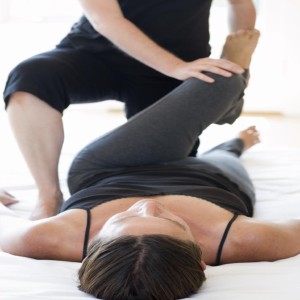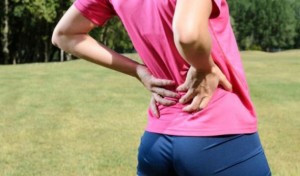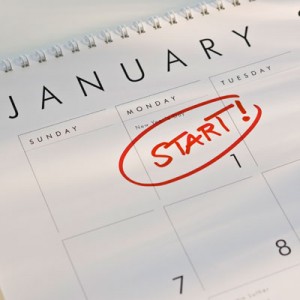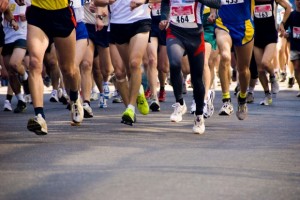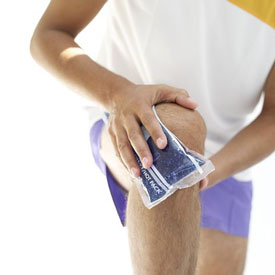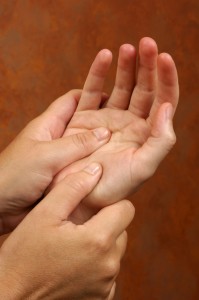 Sitting in front of a computer monitor or laptop for long periods of time is associated with numerous health problems, ranging from weight gain, to cardiovascular disease to a shortening of your life expectancy. Other symptoms include fatigue, headaches, arthritis, increase in blood pressure, risk of fractures, and neck and back pain.
Sitting in front of a computer monitor or laptop for long periods of time is associated with numerous health problems, ranging from weight gain, to cardiovascular disease to a shortening of your life expectancy. Other symptoms include fatigue, headaches, arthritis, increase in blood pressure, risk of fractures, and neck and back pain.
Below are some tips that will help you to stay injury free and energetic throughout your work day.
How to Avoid Aches and Pains at Your Desk:
Sit as close as possible to your desk, with your upper arms parallel to your spine and your hands and forearms rested on the work surface. If your arms are not supported, the muscles of your neck and shoulders will try to compensate and you will end up with shorten tight muscles.
Make sure your elbows are at a 90-degree angle, and your legs are bent at the knees at a 90 degree angle. Adjust your chair higher or lower to achieve the 90-degree angles. If you have to lift your feet off the ground because of a chair or a desk that is too high, use a footstool to prop and rest your feet at the 90 degree angle.
Chair depth refers to the length between the back edge and front edge of your chair. To check for proper chair depth, sit all the way back in your chair so that your back is fully supported by the backrest and check the room between the front edge of your chair and your calves by making a fist and bringing it to the edge of the chair and pushing it on the calf. If you can’t fit your fist between the front edge of the chair and your calf, your chair is likely too deep, which will decrease your circulation.
Moving the chair’s backrest forward or inserting a cushion to support your lower back, should solve this problem. Low back support is essential in preventing slouching and reducing back pain.
How to Avoid Typing Pain:
Poor typing posture, either from improper seating arrangements or tight muscles, can lead to sore hands, fingers and carpal tunnel syndrome. Remember to use minimum force when typing on the keyboard, and place the keyboard directly in front of the monitor.
Take each hand, one at a time and place all five finger tips together. Slip a wide rubber band ( the rubber bands that hold the broccoli stalks together in the grocery store are perfect) around all five fingers and draw them apart against the resistance of the band, this will help reduce and strengthen your hand and finger muscles.
Your hands have many muscle, and like with any muscle, deep massage will break up knots, reduce pain and improve function. Try rolling a hard ball into your palm halfway through the day, or see a massage therapist for a hand massage at least twice a month. Hand massages are normally 20 to 30 minutes in length, and are a great lunch time activity.
How to Avoid Shoulder Slumping:
Sitting, typing and focusing on a screen a few inches below and in front of you will create slumped shoulders, unstable shoulder joints, and tight “pecs”.
Naturally our shoulder blades are stable, retracted, and down. This protects our shoulders and allows full mobility. When we slump forward, our shoulder blades drift apart, jeopardizing our shoulder stability.
Try to fully protract your shoulder blades by pushing your arms as far forward as possible which will spread your shoulder blades; then lift your arms up directly over your head. If you can’t do that comfortably, your shoulders are out of place.
Slumping shoulders will pull the rest of your spine out of order, simply because you’ve got the combined weight of your head and upper trunk pulling down. To avoid the slump, make sure when you sit, your buttocks sits far back in the chair, and roll your shoulders one at a time back, and down.
Your monitor or laptop needs to be at eye level or slightly above eye level. This will keep your head in the correct position, above your should with no tilting. Watch your head position, and try to keep the weight of your head directly above its base of support – the neck. Maintain your thoracic spine, by keeping the shoulder blades retracted; which means back and down.
How to Avoid Computer Vision Syndrome:
Eyestrain is an issue that affects anyone who looks at a computer screen all day. It has plenty of short term symptoms like dry eyes, blurred vision, headaches, and more.
Adjust the monitor’s position so that is 50-80 centimeters away from your eyes, with the top of your monitor at eye level. For most of us, that means you will need to raise your monitor by using a riser, or a stack of books.
An work space with too much light can create monitor glare that quickly tires your eyes. Turn off the over-head fluorescent lights and make sure that your light source is never directed behind or in front of your screen. Use indirect lighting such as a floor or desk lamp.
Use the 20-20-20 rule: Every 20 minutes, find an object about 20 feet away, and stare at it for 20 seconds; this will exercise your eyes and give them a break from your monitor’s screen.
Remember that the best thing you can do for yourself at work is to keep moving throughout the day!
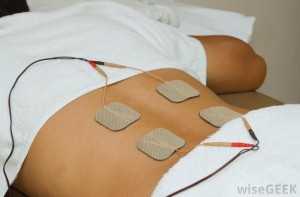 TENS stands for Transcutaneous Electrical Nerve Stimulation. A TENS machine works by sending electrical pulses across the surface of the skin and along the nerve strands. It is a modality that can be safely used on multiple conditions.
TENS stands for Transcutaneous Electrical Nerve Stimulation. A TENS machine works by sending electrical pulses across the surface of the skin and along the nerve strands. It is a modality that can be safely used on multiple conditions.
